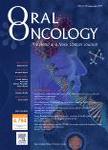版权所有:内蒙古大学图书馆 技术提供:维普资讯• 智图
内蒙古自治区呼和浩特市赛罕区大学西街235号 邮编: 010021

作者机构:Vrije Univ Amsterdam Med Ctr Dept Radiol & Nucl Med POB 7057 NL-1007 MB Amsterdam Netherlands Vrije Univ Amsterdam Med Ctr Dept Radiat Oncol Amsterdam Netherlands Univ Med Ctr Utrecht Dept Head & Neck Surg Oncol Utrecht Netherlands Vrije Univ Amsterdam Med Ctr Dept Otolaryngol Head & Neck Surg Amsterdam Netherlands Vrije Univ Amsterdam Med Ctr Dept Epidemiol & Biostat Amsterdam Netherlands Vrije Univ Amsterdam Med Ctr EMGO Inst Hlth & Care Res Amsterdam Netherlands
出 版 物:《ORAL ONCOLOGY》 (口腔肿瘤)
年 卷 期:2019年第88卷
页 面:75-83页
核心收录:
学科分类:1003[医学-口腔医学] 1002[医学-临床医学] 100214[医学-肿瘤学] 10[医学]
基 金:Netherlands Organisation for Health Research and Development [10-10400-98-14002]
主 题:Head and Neck Neoplasms Perfusion MRI Diffusion Magnetic Resonance Imaging Positron-Emission Tomography Tomography X-Ray Computed Perfusion Prognosis Neoplasm Local Recurrence Survival Systematic review
摘 要:This systematic review gives an extensive overview of the current state of functional imaging during (chemo)radiotherapy to predict locoregional control (LRC) and overall survival (OS) for head and neck squamous cell carcinoma. MEDLINE and EMBASE were searched for literature until April 2018 assessing the predictive performance of functional imaging (computed tomography perfusion (CTp), MRI and positron-emission tomography (PET)) within 4 weeks after (chemo)radiotherapy initiation. Fifty-two studies (CTp: n = 4, MRI: n = 19, PET: n = 26, MRI/PET: n = 3) were included involving 1623 patients. Prognostic information was extracted according the PRISMA protocol. Pooled estimation and subgroup analyses were performed for comparable parameters and outcome. However, the heterogeneity of included studies limited the possibility for comparison. Early tumoral changes from (chemo)radiotherapy can be captured by functional MRI and F-18-FDG-PET and could allow for personalized treatment adaptation. Lesions showed potentially prognostic intratreatment changes in perfusion, diffusion and metabolic activity. Intratreatment ADC(mean) increase (decrease of diffusion restriction) and low SUVmax (persistent low or decrease of F-18-FDG uptake) were most predictive of LRC. Intratreatment persistent high or increase of perfusion on CT/MRI (i.e. blood flow, volume, permeability) also predicted LRC. Low SUVmax and total lesion glycolysis (TLG) predicted favorable OS. The optimal timing to perform functional imaging to predict LRC or OS was 2-3 weeks after treatment initiation.